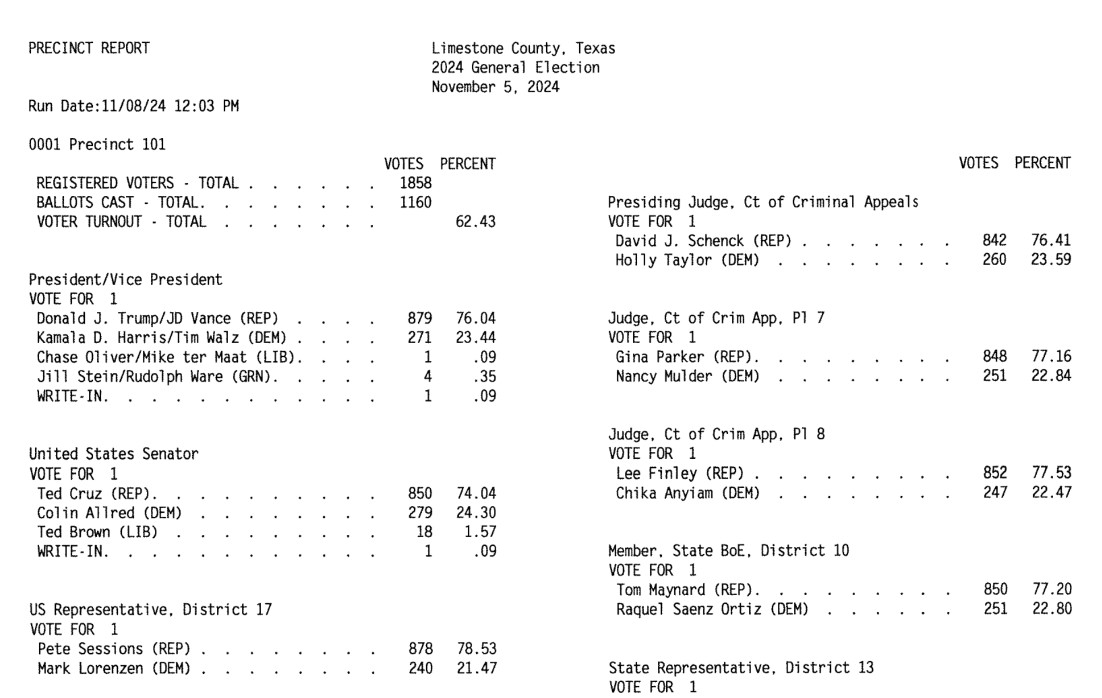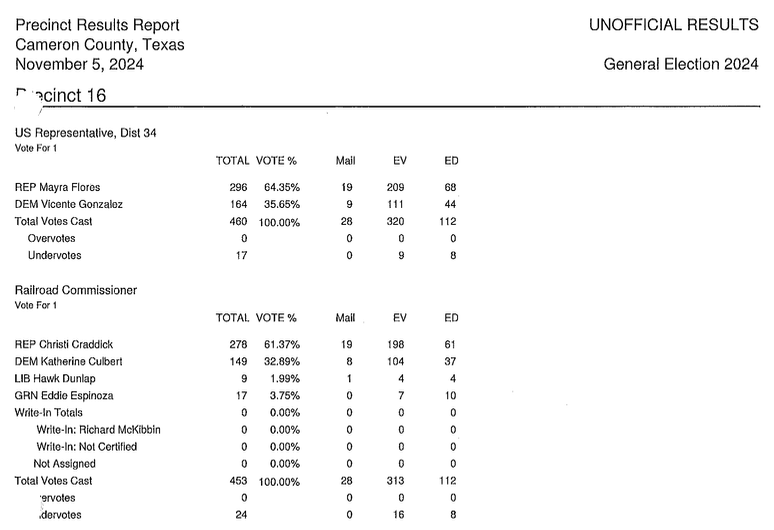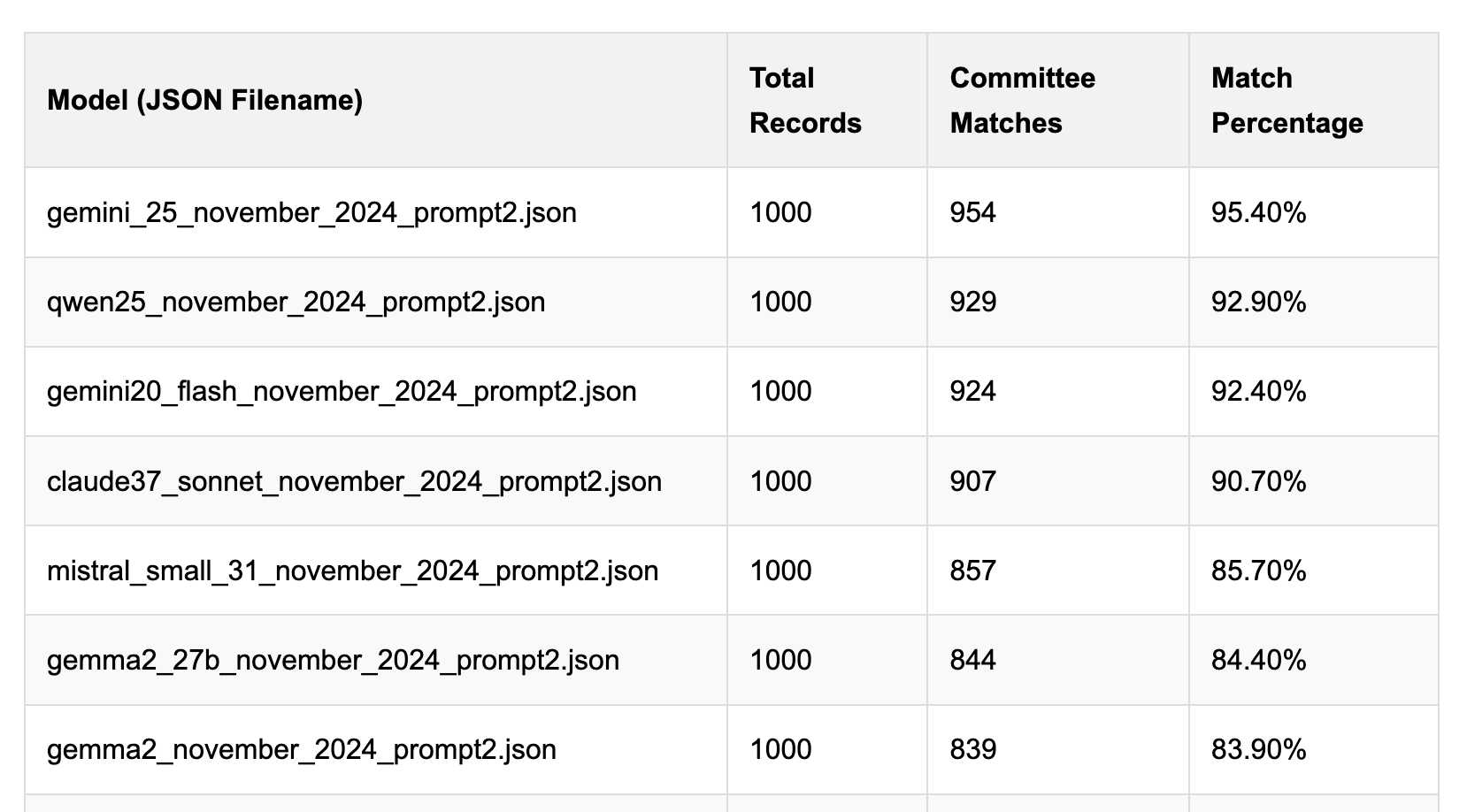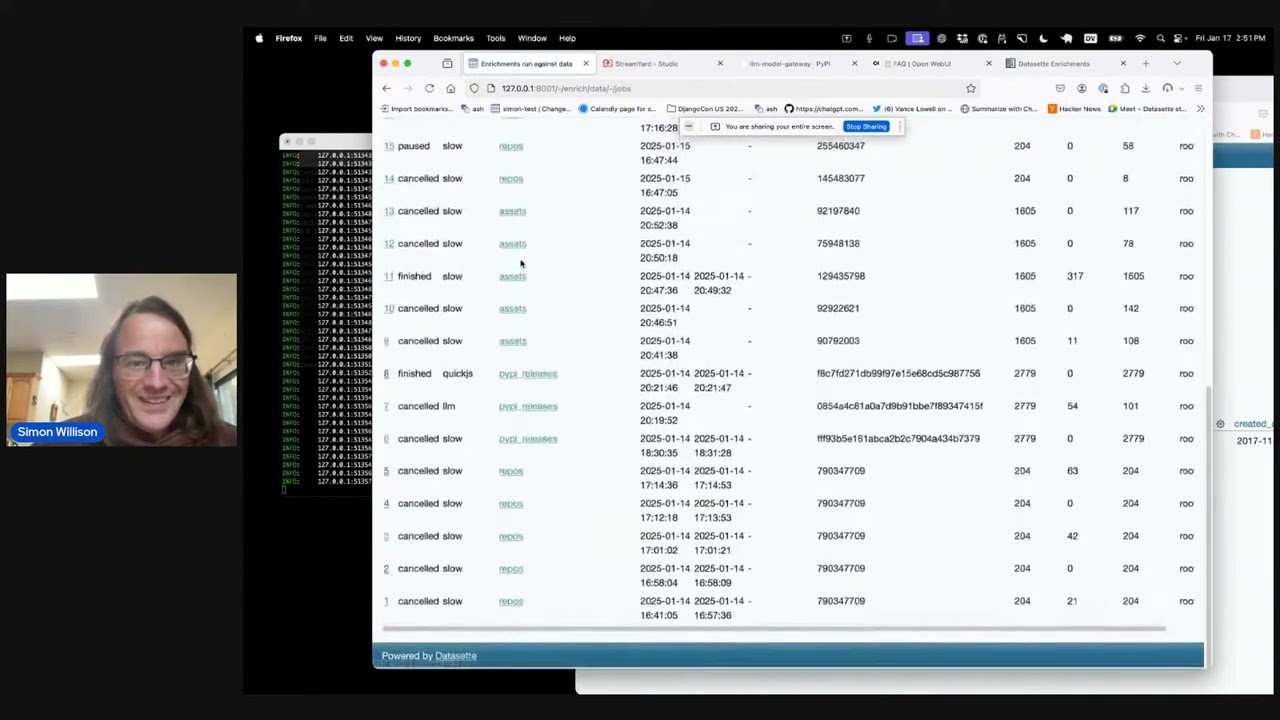8 posts tagged “derek-willis”
2025
How OpenElections Uses LLMs (via) The OpenElections project collects detailed election data for the USA, all the way down to the precinct level. This is a surprisingly hard problem: while county and state-level results are widely available, precinct-level results are published in thousands of different ad-hoc ways and rarely aggregated once the election result has been announced.
A lot of those precinct results are published as image-filled PDFs.
Derek Willis has recently started leaning on Gemini to help parse those PDFs into CSV data:
For parsing image PDFs into CSV files, Google’s Gemini is my model of choice, for two main reasons. First, the results are usually very, very accurate (with a few caveats I’ll detail below), and second, Gemini’s large context window means it’s possible to work with PDF files that can be multiple MBs in size.
Is this piece he shares the process and prompts for a real-world expert level data entry project, assisted by Gemini.
This example from Limestone County, Texas is a great illustration of how tricky this problem can get. Getting traditional OCR software to correctly interpret multi-column layouts like this always requires some level of manual intervention:

Derek's prompt against Gemini 2.5 Pro throws in an example, some special instructions and a note about the two column format:
Produce a CSV file from the attached PDF based on this example:
county,precinct,office,district,party,candidate,votes,absentee,early_voting,election_day
Limestone,Precinct 101,Registered Voters,,,,1858,,,
Limestone,Precinct 101,Ballots Cast,,,,1160,,,
Limestone,Precinct 101,President,,REP,Donald J. Trump,879,,,
Limestone,Precinct 101,President,,DEM,Kamala D. Harris,271,,,
Limestone,Precinct 101,President,,LIB,Chase Oliver,1,,,
Limestone,Precinct 101,President,,GRN,Jill Stein,4,,,
Limestone,Precinct 101,President,,,Write-ins,1,,,
Skip Write-ins with candidate names and rows with "Cast Votes", "Not Assigned", "Rejected write-in votes", "Unresolved write-in votes" or "Contest Totals". Do not extract any values that end in "%"
Use the following offices:
President/Vice President -> President
United States Senator -> U.S. Senate
US Representative -> U.S. House
State Senator -> State Senate
Quote all office and candidate values. The results are split into two columns on each page; parse the left column first and then the right column.
A spot-check and a few manual tweaks and the result against a 42 page PDF was exactly what was needed.
How about something harder? The results for Cameron County came as more than 600 pages and looked like this - note the hole-punch holes that obscure some of the text!

This file had to be split into chunks of 100 pages each, and the entire process still took a full hour of work - but the resulting table matched up with the official vote totals.
I love how realistic this example is. AI data entry like this isn't a silver bullet - there's still a bunch of work needed to verify the results and creative thinking needed to work through limitations - but it represents a very real improvement in how small teams can take on projects of this scale.
In the six weeks since we started working on Texas precinct results, we’ve been able to convert them for more than half of the state’s 254 counties, including many image PDFs like the ones on display here. That pace simply wouldn’t be possible with data entry or traditional OCR software.
Political Email Extraction Leaderboard (via) Derek Willis collects "political fundraising emails from just about every committee" - 3,000-12,000 a month - and has created an LLM benchmark from 1,000 of them that he collected last November.
He explains the leaderboard in this blog post. The goal is to have an LLM correctly identify the the committee name from the disclaimer text included in the email.
Here's the code he uses to run prompts using Ollama. It uses this system prompt:
Produce a JSON object with the following keys: 'committee', which is the name of the committee in the disclaimer that begins with Paid for by but does not include 'Paid for by', the committee address or the treasurer name. If no committee is present, the value of 'committee' should be None. Also add a key called 'sender', which is the name of the person, if any, mentioned as the author of the email. If there is no person named, the value is None. Do not include any other text, no yapping.
Gemini 2.5 Pro tops the leaderboard at the moment with 95.40%, but the new Mistral Small 3.1 manages 5th place with 85.70%, pretty good for a local model!

I said we need our own evals in my talk at the NICAR Data Journalism conference last month, without realizing Derek has been running one since January.
Six short video demos of LLM and Datasette projects
Last Friday Alex Garcia and I hosted a new kind of Datasette Public Office Hours session, inviting members of the Datasette community to share short demos of projects that they had built. The session lasted just over an hour and featured demos from six different people.
[... 1,047 words]2023
Teaching News Apps with Codespaces (via) Derek Willis used GitHub Codespaces for the latest data journalism class he taught, and it eliminated the painful process of trying to get students on an assortment of Mac, Windows and Chromebook laptops all to a point where they could start working and learning together.
2020
How much can you learn from just two columns?
Derek Willis shared an intriguing dataset this morning: a table showing every Twitter account followed by an official GOP congressional Twitter account.
[... 951 words]2008
Represent. Andrei Scheinkman and Derek Willis describe how they built the NYTimes Represent feature using GeoDjango and PostGIS.
Represent and GeoDjango. The NYTimes new Represent application is built on GeoDjango.
2007
Django, iCal and vObject. Easy iCal generation for Django using vObject.

